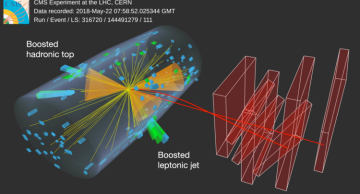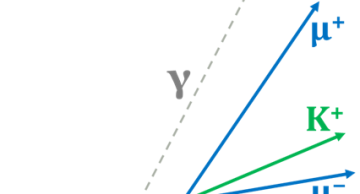Using data collected from 2016 to 2023 and cutting-edge machine learning, CMS observes for the first time the creation of a top quark together with a W and a Z boson – a process so rare it occurs only once in a trillion proton-proton…
The CMS collaboration expands the search for supersymmetry by exploring a wide variety of final states with boosted particles, in a new analysis called “razor boost”.
Supersymmetry, or SUSY, which suggests that every known particle has a new…
The CMS experiment sets limits for BSM particles down to tens-of-MeV aided by machine learning techniques.
Axion-like particles (ALPs) are hypothetical light-weight neutral bosons that could solve deep mysteries in physics, from the strong CP…
The CMS experiment employs a new machine-learning algorithm to improve the reconstruction of invisible particles.
How can one measure particles that escape the detector without interaction? This is the challenge for a key fundamental particle, the…
For the first time ever, the excited states of three beauty mesons are fully reconstructed and their masses are measured directly, using data from the CMS experiment.
The existence of the excited B meson states, B*+, B*0, and B*0s(also known as…
The CMS Collaboration announced 14 new results for LHCP 2025.
In top quark physics, CMS presents the first observation of production of a single top quark in association with a W and a Z boson. This was accomplished using 200 fb-1 of data…






